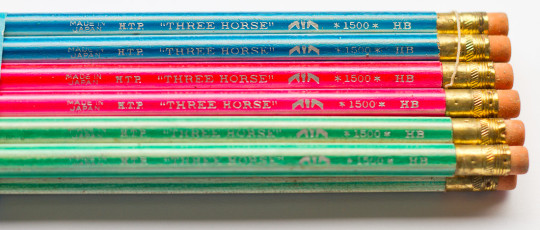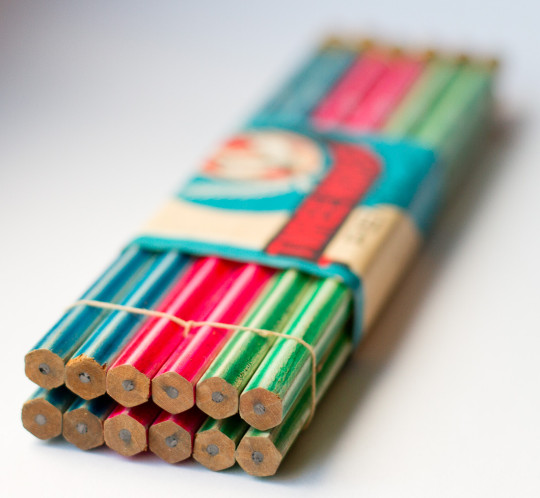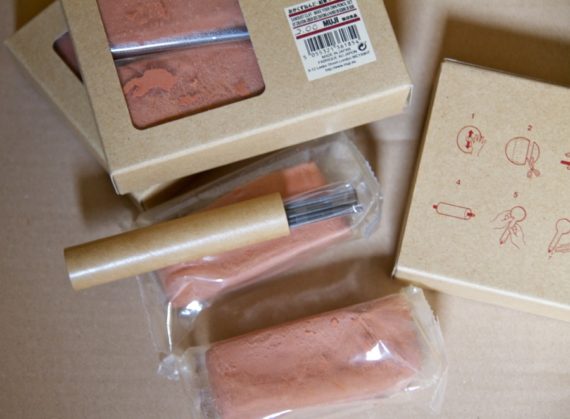Three Horse Pencils
Today: new old stock pencils from Japan.
Introduction
My original guess was that these Three Horse Pencils are from the 1970s, but I found an American web site that indicates that these pencils might be from the 1960s.
I do like pencils with a theme (the Bonanza, the Alligator, …), so even though I’m not too keen on the strong colours and the light stripes (which are similar to the modern Marco 9001 and the Bauhaus 6004) the three horse heads printed on the pencils [1]You’ll probably have to click on the picture to enlarge or you won’t get a good view of the logo. make good for that…
Appearance
Unfortunately, the erasers are unusable by now. The wood smells a bit like frankincense, but less pleasant and also a bit wet. I guess the pencils weren’t stored in a very dry environment.
Sharpening
I managed to produce a nice point using the rotary blade sharpener Deli 0668, my first choice these days when it comes to sharpening the Wopex, too [2]…because of the less acute angle, compared to the Deli 0635, it manages to sharpen the Wopex without major issues while still producing a fantastic point..
Sharpening in different prism sharpeners was less successful. The lead did break most of the time and the surface of the exposed wood looked very frazzled, unless I used a sharpener with a blade in near perfect condition.
Now and then
Compared to modern Japanese pencils the HB lead of the Three Horse Pencil is harder, very similar to a Western/European HB. It takes a bit more effort to erase the graphite, but not really a lot more. The line it puts on paper has a similar darkness as modern pencils. Using a good rubber, in my case the Staedtler Mars Plastic stick, the graphite from this pencil can be removed as well as that of a modern pencil: you’ll just see the dent the pencil left in the paper.
The package sleeve has the letters H.T.P. printed on it. This might be the name of the pencils’ manufacturer, but I was not able to find more information about H.T.P..
Three Horse Pencils Read More »















